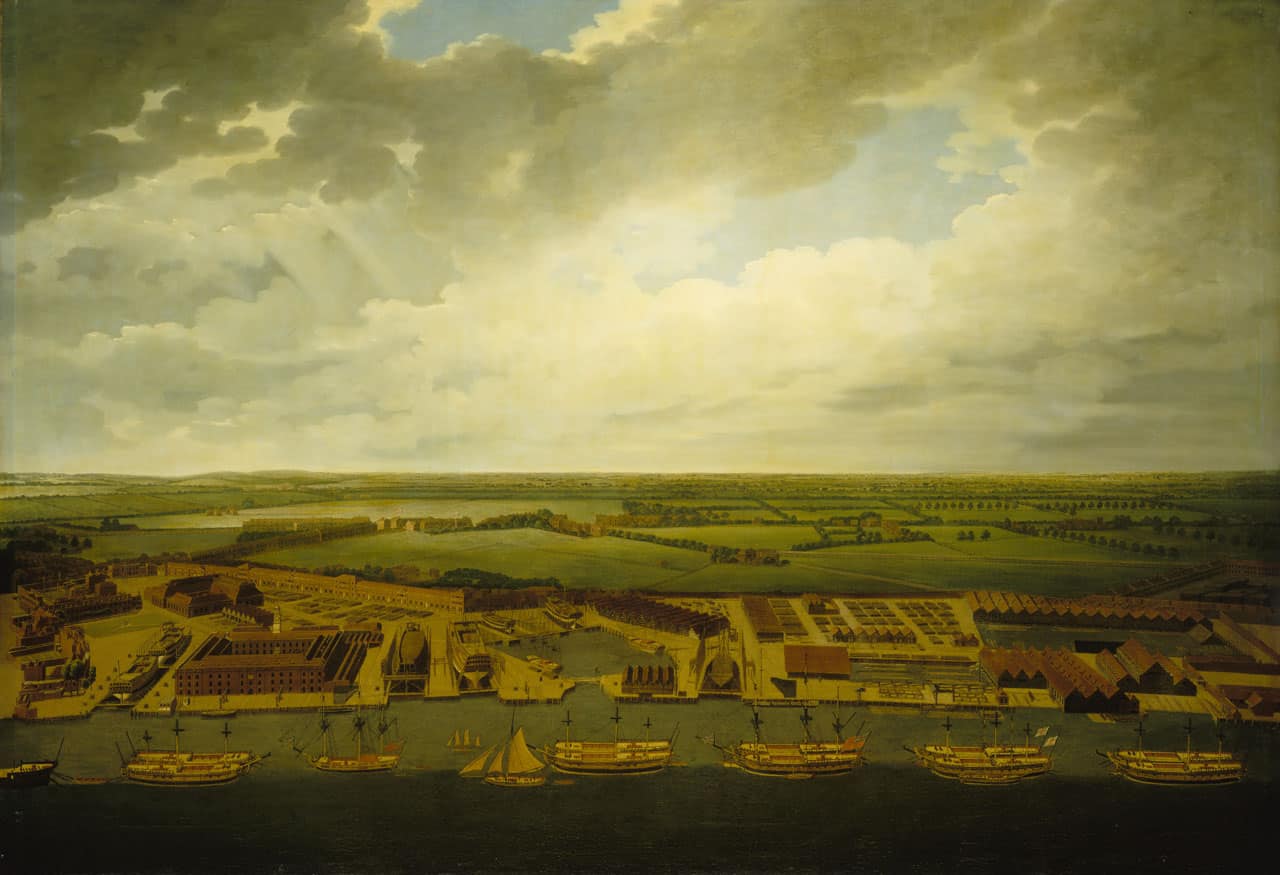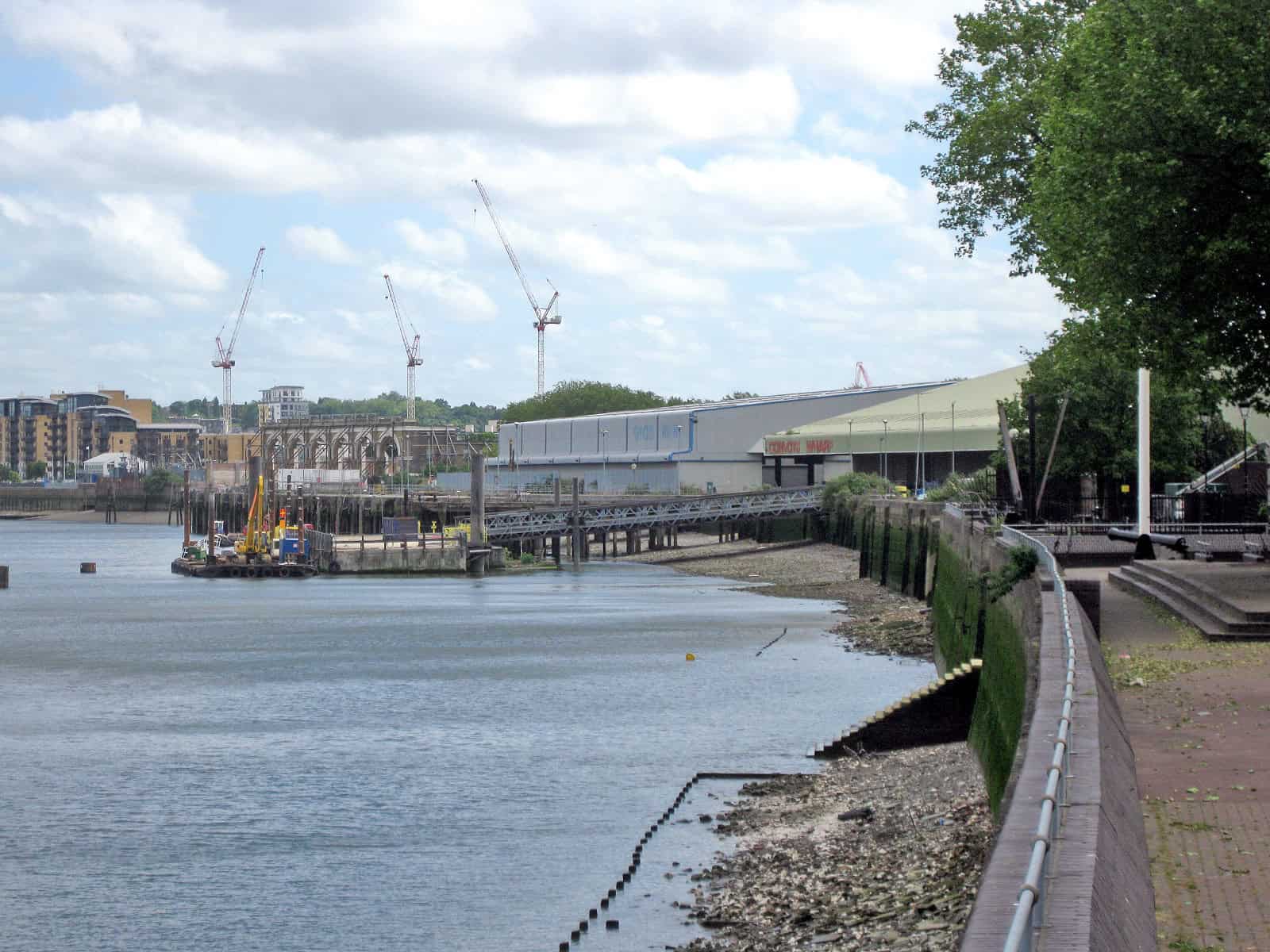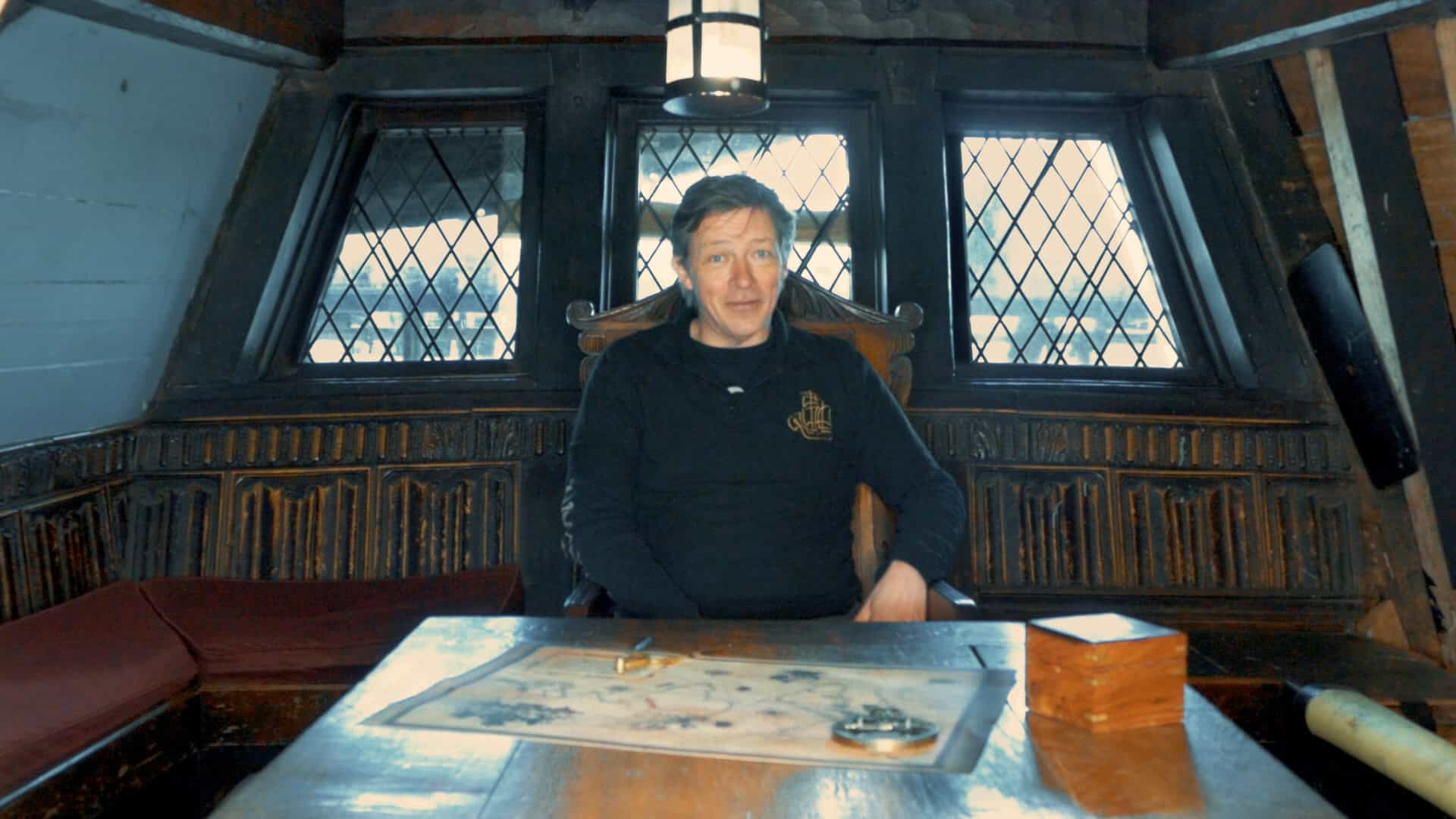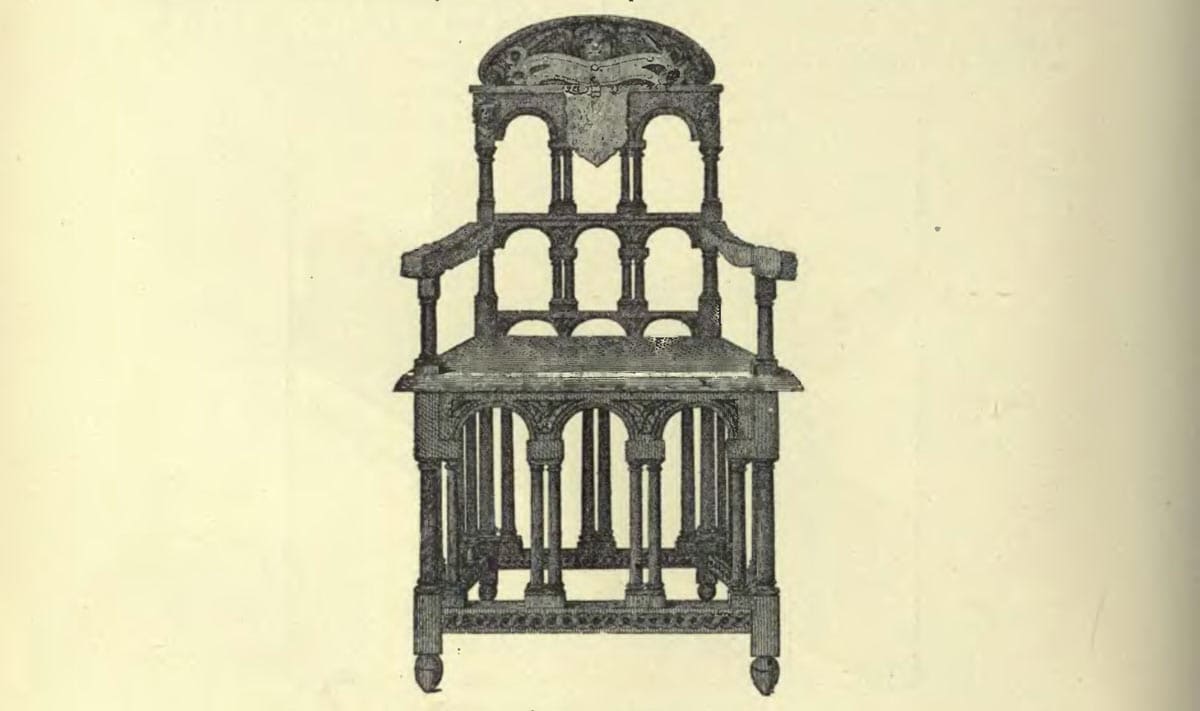A Ship’s Fate
Despite some brilliant engineering and expert craftsmanship, wooden Tudor galleons were not expected to last – and they didn’t! Our imposing Golden Hinde reconstruction often provokes the question “what exactly did happen to the original?”
When Drake returned from his circumnavigation in 1580, public celebration of the man and his exploits were at fever pitch. Very shrewdly, and always looking to make money, Queen Elizabeth had the ship moored in a dry dock in Deptford, about four miles down the river from where the current Golden Hinde sits. People queued for hours and paid to see the ship that had sailed around the world. Someone remarked to us that it must have been like visiting the space shuttle for the Elizabethan public.
 |
Drake would regularly hold parties on board to impress and entertain the upper echelons of Elizabethan society, foreign dignitaries and on occasion, Queen Elizabeth herself. In fact, in April 1581, she visited the ship with so many followers that the gangplank collapsed and around a hundred people fell into the muddy bank of the Thames, thankfully unhurt. She asked Drake to kneel, drew a sword, passed it to a French ambassador, Monsieur de Marchmont, and bade him knight ‘low-born’ Drake. This gesture was also a not-so-subtle gesture of defiance aimed at Spain, suggesting unity of France and England. Her little pirate arose Sir Francis Drake, a phenomenal honour in Tudor England and a remarkable accomplishment for a man of humble beginnings.
 |
However, things moved fast in the Early Modern Age, and after much upheaval – Anglo-Spanish war, Tudors out, Stuarts in, Stuarts out, Puritan Cromwell in, civil war, Stuarts back in – sentimentality for The Golden Hinde had all but vanished.
There is a report of the ship looking very emaciated about twenty years after its return, and by 1662 it was rotting away. The ship was broken up and the majority of the wood is believed to be buried in Convoy’s Wharf, an old Tudor shipyard.
 |
The few remaining good pieces of timber were crafted into a chair by John Davies, the keeper of Deptford’s naval stores, who donated it to Oxford University. It’s in the Bodleian Library if you want to pay it a visit! It has a rather lovely tribute to the ship, penned by celebrated 17th century poet Abraham Cowley, carved into a tablet hanging from the back of the chair:
To this great Ship which round the Globe has run,
And matcht in Race the Chariot of the Sun,
This Pythagorean Ship (for it may claime
Without Presumption so deserv’d a Name,
By knowledge once, and transformation now)
In her new shape, this sacred Port allow.
Drake & his Ship, could not have wisht from Fate
A more blest Station, or more blest Estate.
For Lo! a Seate of endles Rest is giv’n
To her in Oxford, and to him in Heav’n.
I love this poem as it is a tribute not to Drake, Elizabeth or England, but to my undisputed favourite member of the voyage – the beautiful galleon, whose doppelganger is now my office!
 |


